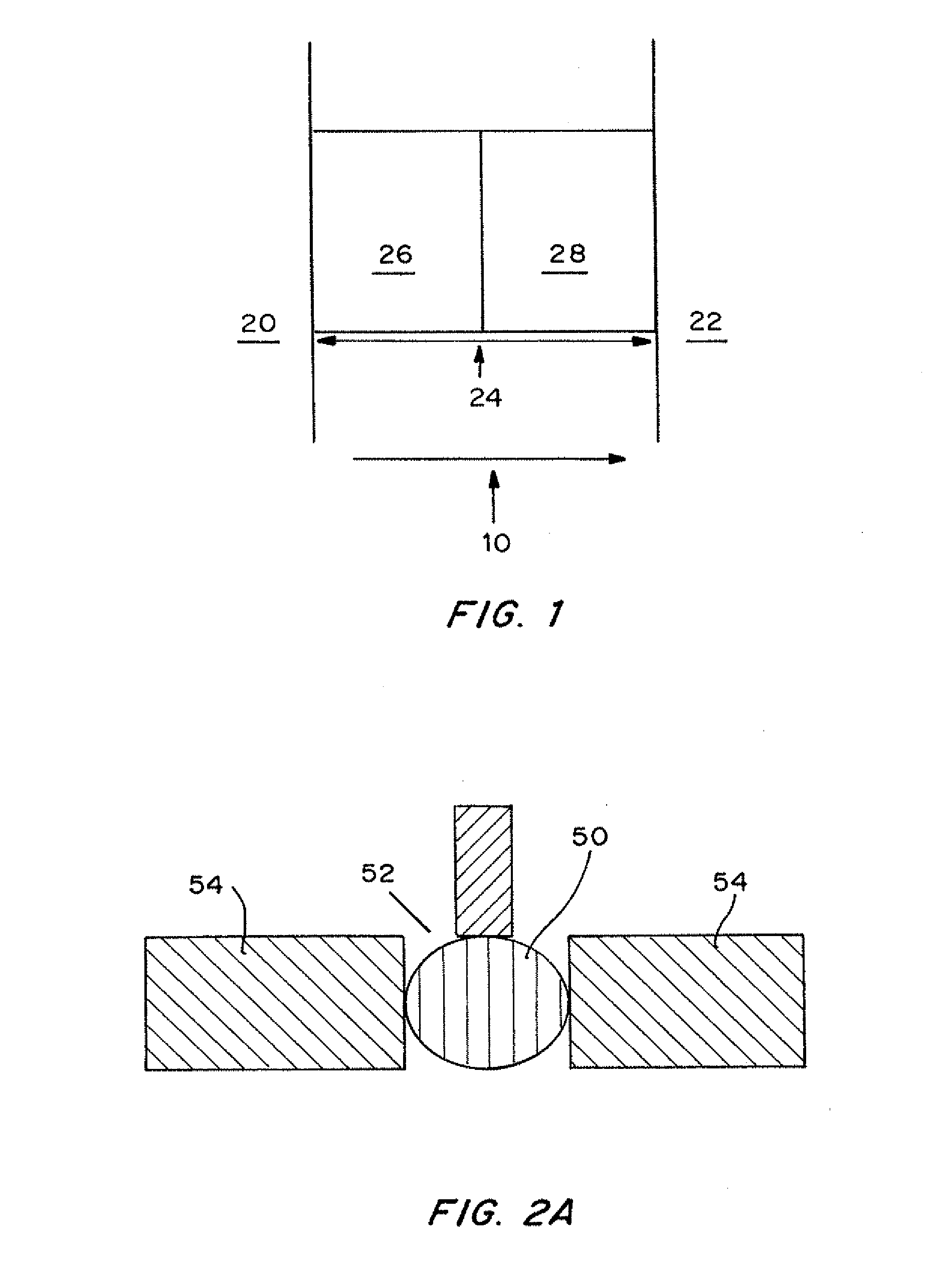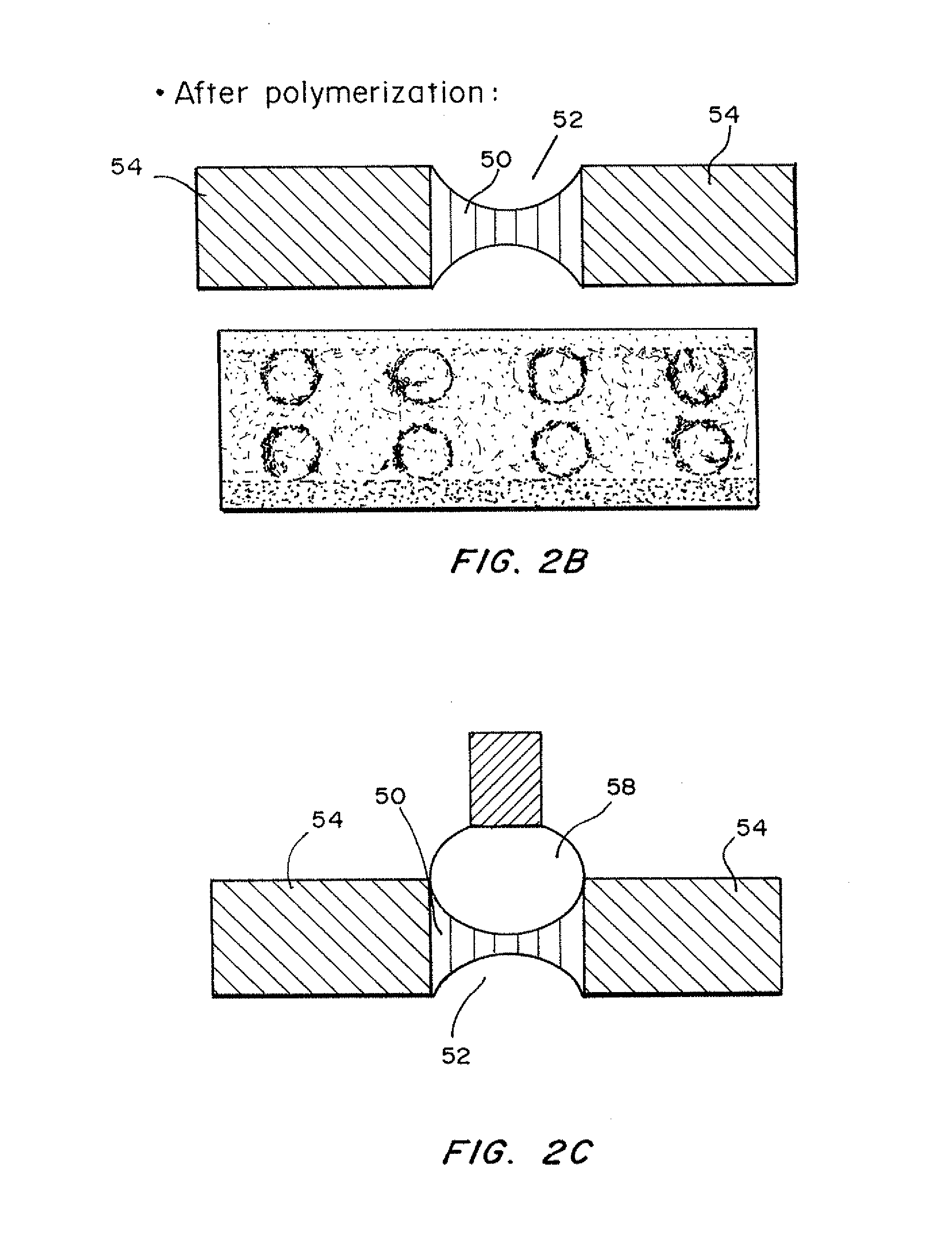System and Method for Proteomics
a proteomics and system technology, applied in the field of systems and kits, can solve the problems of poor resolution, low throughput greatly limit the process, and most biomarker proteins are undetected by current methods, and achieve the effects of increasing resolution, low conductivity, and high field strength
- Summary
- Abstract
- Description
- Claims
- Application Information
AI Technical Summary
Benefits of technology
Problems solved by technology
Method used
Image
Examples
example 1
Comparison of Recovery Using 0.1 Step pI Trap to No Trap.0
[0079]dPC™ manufacture. A glass blank with forty one 1 mm×2 mm holes was treated with silane to ensure glass to polymer adhesion. An array of pIs was created by mixing acrylamido buffers between a range of pH 4.2 and 6.2 at a 0.1 pH step. The range pH 4.2-6.2 is repeated twice in the chip. The final concentration of the immobiline buffers are between 12-30 mM, 6% C, 8% T. Using a robotic dispenser, 2.2 ul of the acrylamido buffer solution was dispensed into each hole followed by 8 minutes UV photopolymerization with a methylene blue / DPIC / STS system. 20 plugs ranging from 4.20, 4.30, 4.40 to 6.20 were into the first 20 plugs and then repeated for the next 20 plugs. To create a two pH layered chip, 0.2 ul of acrylamido buffer pk 3.6 was added to one side of the gel plug followed by an additional 22 minutes photopolymerization. No additional acrylamido buffer was added to the single layer plugs. After polymerization, the chip wa...
example 2
Comparison of Recovery Using Pharmalytes in the Running Buffers
[0083]dPC manufacture: dPC chips were manufactured as in Example 1 except no second pH layer was applied, the pH range was pH 4.2-6.2 and the step was 0.05 pH. The sample was pretreated and run as Example 1 with or without 0.25% Pharmalytes pH 2.5-5 in the anode and 0.25% Pharmalytes pH 5-8 in the cathode. dPC separated proteins were transferred to a second dimension gel as described earlier and Sypro Ruby stained.
[0084]FIGS. 5A and 5B are photographs comparing proteome coverage of an E. coli lysate separation between pH 4.2 and 6.2 by dPC™ isoelectric focusing and SDS PAGE 4-20% gels second dimension. FIG. 6A is the separation of E. coli lysate without pharmalytes and DTT in running buffers. FIG. 6B shows the separation of E. coli lysate with 0.25% pharmalytes and 40 mM DTT in running buffers. The comparison clearly shows higher protein yield and resolution through the addition of Pharmalytes to the running buffers.
example 3
Comparison of Recovery Using 0.1 step pI Traps to No Trap; with Ampholyte Added to Buffer
[0085]dPC manufactured and run as in Example 1. The sample was reduced and alkylated [125I]-ovalbumin spiked into 30 μg E. coli lysate. After isoelectric trapping, the individual gel plugs were extruded from the glass chip, placed in 100 μl SOLVABLE™ Packard Instruments and stored overnight at ambient temperature. 10 μl was added to 300 ul ULTIMAGOLD™ liquid scintillation cocktail prior to radioactive counting. [125I]-ovalbumin isoelectric.
[0086]As shown by FIGS. 6A and 6B, trapping collection increased by 70% with the pI 0.1 step traps.
PUM
| Property | Measurement | Unit |
|---|---|---|
| Fraction | aaaaa | aaaaa |
| Fraction | aaaaa | aaaaa |
| Molar density | aaaaa | aaaaa |
Abstract
Description
Claims
Application Information
 Login to View More
Login to View More - R&D
- Intellectual Property
- Life Sciences
- Materials
- Tech Scout
- Unparalleled Data Quality
- Higher Quality Content
- 60% Fewer Hallucinations
Browse by: Latest US Patents, China's latest patents, Technical Efficacy Thesaurus, Application Domain, Technology Topic, Popular Technical Reports.
© 2025 PatSnap. All rights reserved.Legal|Privacy policy|Modern Slavery Act Transparency Statement|Sitemap|About US| Contact US: help@patsnap.com



